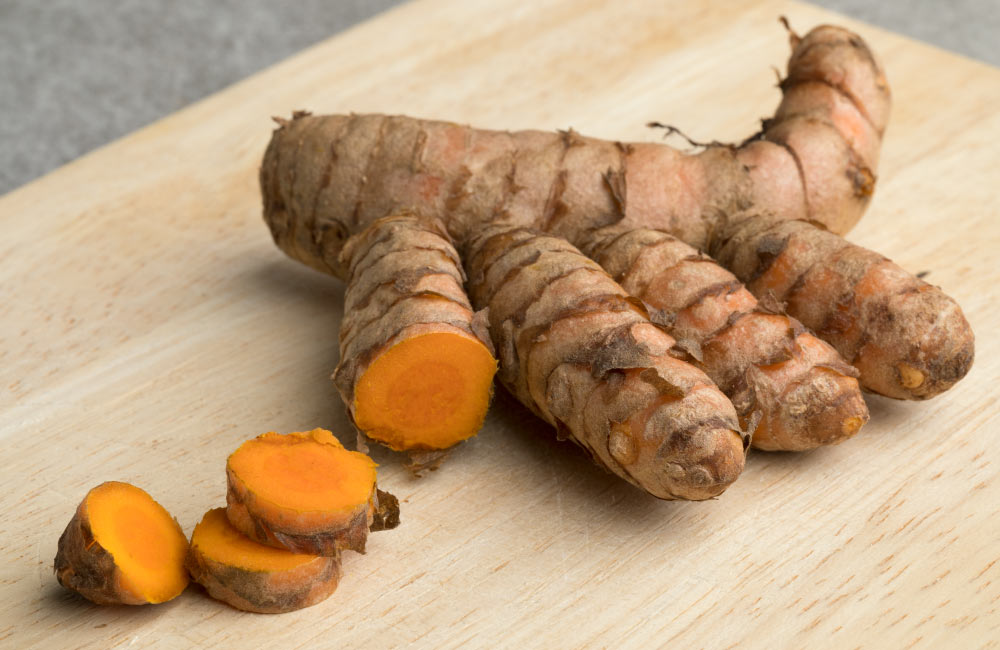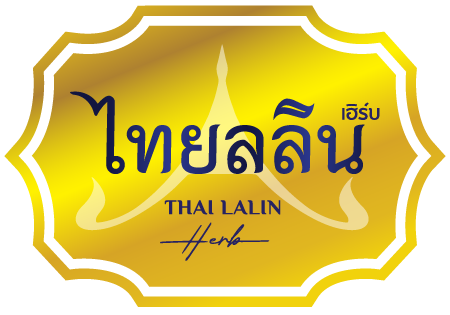
Plai or Wan Plai, common name Phlai, Cassumunar ginger, Bengal root
Plai, scientific name Zingiber montanum (J.Koenig) Link ex A.Dietr. (ZINGIBERACEAE)
Plai herb has other local names that are crab turmeric, mint salang (Chan-Mae Hong Son), Wan Fai, yellow plai (central region),
Pu Loei, Pu Loi (Northern region), Wan Pop (Northeastern region), etc.
Characteristics of Plai
- Plai tree Plai is a herbaceous plant with a height of about 0.7-1.5 meters with underground rhizomes. The bark is fawn. The inner flesh is yellow to greenish yellow. Stab artificial shoots or stems to form a clump. It consists of a sheath or leaf covering overlapping. Juicy fresh rhizomes have astringent, pungent, hot, fiery taste, with a specific smell, while fresh and dried rhizomes have a slightly spicy taste. Propagated by seeds, rhizomes or rhizomes, but generally the rhizomes are used as cuttings for cultivation. This species is native to Asia in India, Indonesia, Malaysia and Thailand. It is widely grown in Kanchanaburi, Suphanburi, Prachinburi and Sa Kaeo provinces.
- Phlai leaves are oblong, spear-shaped. The leaves are single leaves arranged alternately, about 3.5-5.5 centimeters wide and about 18-35 centimeters long.
- Plai flowers bloom in bouquets. stabbed from an underground rhizome The petals are soft. with purple bracts
- Phlai. The nature of the fruit is a round dry fruit.
Properties of Plai
- Phlai flowers help drive the blood and spread the blood. Distribute the clotted blood into clots (flowers).
- Help solve disability elements (Ton Plai)
- Properties of herbs, Plai leaves help cure fever (leaves).
- help resolve vomiting Vomiting blood (Hua Plai)
- Helps relieve toothache (Head Plai)
- Plai with medicinal properties Rhizomes help drive blood (rhizomes).
- Helps to resolve nosebleeds flowing out of the nose (root).
- Helps treat diseases caused by bleeding from the mouth and nose (rhizomes).
- Plai rhizome is used as an asthma treatment. By using 5 parts of dried rhizomes / 2 parts of dipli / 2 parts of pepper / 1/2 parts of cloves / 1/2 parts of borneol are ground and mixed together. Use 1 teaspoon of medicinal powder to brew with hot water and eat. or to form a bolus by using honey the size of a jujube seed then eat 2 balls at a time, having to eat continuously until the symptoms improve (dry rhizomes)
- Helps to relieve flatulence, flatulence, flatulence, diarrhea, helps expel wind in the intestines. By using dried rhizomes to grind into powder and then eat 1 teaspoon at a time by bringing it to brew with hot water and mixing with a little salt and bring it to drink (dry rhizomes)
- Helps to relieve stomach pain, diarrhea, dysentery, dysentery. With the use of fresh rhizomes about 4-5 glasses brought to the pound thoroughly. then squeeze out the water Add half a teaspoon of salt and eat. Or can be eaten with lime juice as well (fresh rhizomes)
- Helps relieve constipation (rhizomes).
- Helps heal wounds in the intestines. Cure inflammatory bowel disease (rhizomes)
- Helps to resolve deformed stools (Ton Plai)
- Helps drive the menstrual cycle of women driving all bad blood and solve Mutkidu leucorrhea (head Plai, rhizomes)
- Helps make menstruation normal (rhizome)
- Helps treat sprains, bruises, swelling, sprained ankles by using the head of Plai to bring rain and apply on the area with bruises, swelling or sprains / or use 1 fresh rhizome, slice it into thin slices and boil together with herbs. Others, because Plai contains essential oils (fresh rhizomes) to help relieve sprains, bruises, swelling, sprained ankles by using 1 rhizome to be pounded and squeezed with water to massage the affected area / or to be thoroughly pounded. Then mix with a little salt. Wrapped into a compress Then heat the steam Used to compress the area with bruises, swelling and pain in the morning-evening until it disappears / or can be used to make Plai oil. By using 2 kilograms of phloi, fry in 1 kg of hot vegetable oil, fry until golden and then remove the phloi. And add about 4 teaspoons of clove powder and continue to fry over low heat for about 10 minutes, then bring it to the filter until the oil is warm and put 4 teaspoons of camphor into a closed container. Wait until it cools and then shake the camphor to dissolve. Then bring Plai oil to massage 2 times a day when having pain, morning-evening (Khun Wiboon Khemchalerm’s formula) (rhizome, head)
Helps reduce inflammation, relieve pain, swelling, stiff lines, stiffness (rhizomes). - help relieve fatigue Relieve muscle pain body pain (leaves)
- Helps treat skin diseases (rhizomes)
- Plai, the properties of the rhizome help treat abscesses (rhizome).
- Helps suck out pus (rhizomes)
- Helps to cure rashes By using the rhizomes, grinding them into powder and mixing them with water. Or use fresh rhizomes and wash them clean. You can also apply the rain and apply to the affected area (rhizomes).
- Rhizomes can be used to coat wounds to prevent infection (rhizomes).
- Helps relieve symptoms of anxiety (leaves)
- Helps treat beriberi (rhizomes)
- Used as a local anesthetic (rhizome).
- Used as an astringent. By using 1 fresh rhizome, slice it into thin slices and boil it together with other herbs because Plai contains essential oils (fresh rhizomes).
- The rhizome is used as a nail remover. By using 1 fresh rhizome (thumb-sized) to be thoroughly pounded and mixed with salt and camphor. half a teaspoon each Then use it to mask the area with pus. You should change the medicine you use as a mask once a day (fresh rhizomes).
- Plai rhizomes can be boiled with water for women’s postpartum baths (rhizomes).
- The rhizomes of Plai contain essential oils. Which from the experiment found that it has the effect of reducing inflammation (rhizomes)
- Plai has an effect similar to smooth muscle. Helps reduce contractions of the uterus and intestines. including the stomach in laboratory rats
- Plai has the effect of helping to fight fungus. Microorganisms and bacteria
- Plai has an anti-histamine effect in pediatric patients with asthma. It can significantly reduce the size of the blister from the subcutaneous injection of histamine solution. It also helps make patients with asthma experience less asthma. Lung function works better
- Plai rhizomes are classified in medicinal recipes. “Ya Prasa Clove”, which is a medicinal formula that has properties to relieve stomach pain, colic, inflation from indigestion due to trace elements
- Plai rhizomes are classified in the medicinal formula “Ya Prasaplai”, which has properties to help treat menstrual irregularities or less than usual. and
- helps expel amniotic fluid in women after giving birth
Caution
- Taking high doses or using it for a long time can cause liver toxicity. And it is not safe to use as an asthma medication. and should not be taken alone for a long period of time In addition to eliminating substances that are toxic to the liver first,
- Do not use Plai cream on the eyelid area. soft tissue and areas of skin that have wounds or open wounds
- This herb is not recommended for use by pregnant women. or are breastfeeding and young children
Benefits of Plai
- Helps moisturize the skin By using 1 fresh rhizome, slice it into thin pieces and boil it together with other herbs because the rhizome contains essential oils (fresh rhizomes).
- The benefits of phlai help to repel insects and kill insects (rhizomes).
- Helps keep mosquitoes away and repels mosquitoes. Oil from the Plai head mixed with alcohol and applied to the skin can help repel mosquitoes and repel mosquitoes (Plai head).
- Can be made into Plai cream, Plai oil, Plai powder, Plai skin scrub, Plai face paint.
Plai with beauty
- Skin Scrubbing Phlai The rhizomes can be used to make powder for exfoliating the skin. It will help make the skin look flawless. Helps protect skin from free radicals Help reduce wrinkles. dark spots and does not cause acne which method of making Plai scrub Then take the phlai rhizomes and roughly chop them, about 4 tablespoons, and put them in a blender jar. Then follow with 3 cups of chalk, pound it until it breaks, then put it into a blender and blend until it’s smooth and uniform. After that, add 1 cup of boiled water and blend well again. When the cream is the same, mold it into small balls and put it in the sun to dry completely and put it in a bottle. You will get Plai powder that can be used to scrub the skin. The method of use is to mix it with cold water and apply it to the skin and leave it for about 30 minutes and then rinse it off.
- Plai face paint or plai face mask using 2-3 pieces of plai powder mixed with cold water and then applied to the face before going to bed. Leave it for about 30 minutes and then wash it off. It will help make your face look soft. In the recipe, you can add about 2 teaspoons of fresh milk or yogurt as well.
Reference source: Thailand Institute of Scientific and Technological Research (TISTR), website of the Office of the Royal Initiative Plant Genetic Conservation Project. HRH Princess Maha Chakri Sirindhorn Princess Maha Chakri Sirindhorn, herbal medicine database website Faculty of Pharmacy Ubon Ratchathani University, Herbal Information Office Mahidol University, study of Plai extracts applied to the skin to prevent mosquito bites. Journal of the Department of Medical Sciences (Phan Urai, Prakong)
Information compiled by the Medthai website.
https://medthai.com/%e0%b9%84%e0%b8%9e%e0%b8%a5/


